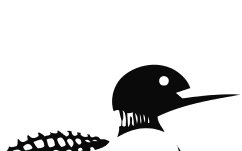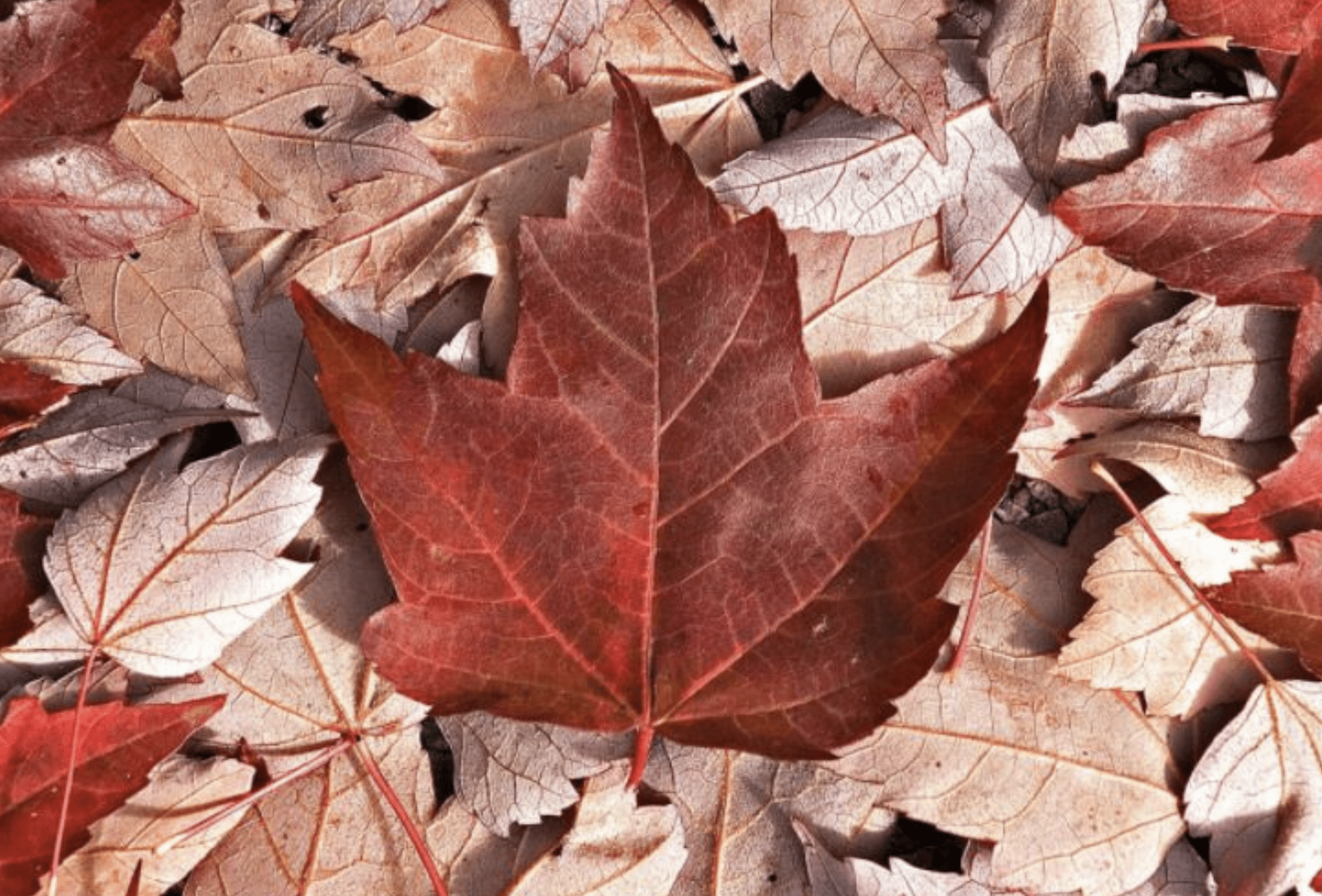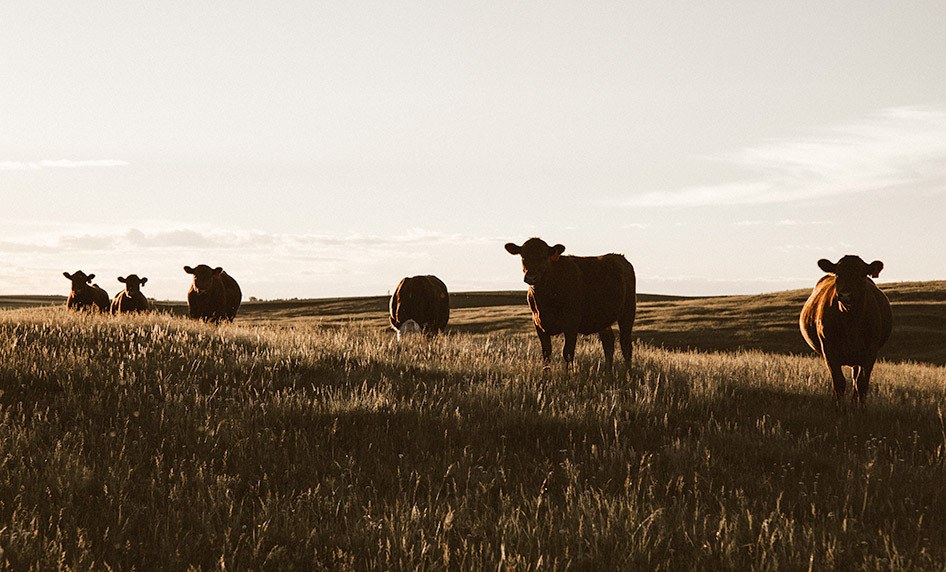
David Grenon started Canada’s national anthem ahead of Game 6 of the World Series with a bright smile and booming voice before making a gesture for the crowd to join in. And did they ever.
By the end, after the awkward flip from French back to English at Toronto’s Rogers Centre, row after row, tier after tier of Blue Jays fans were knocking it out of the park. It wasn’t the usual tepid muttering or vague mouthing of words, but actual singing, with gusto, of a rousing rendition of O Canada.
It was so well received it didn’t make headlines.
It doesn’t always go that way.
Not making headlines, not going viral, not inciting outrage — that’s now the public test for national anthems, because outrage, at least professed outrage, is what follows when musicians change lyrics, deviate from the melody or sing too casually.
“The hardest song in the world to sing is a national anthem,” Grenon said afterwards. “People have a strong, subjective idea of how it should be done, and no two people have the same idea.
“It might feel like you’re stepping into a trap. It’s only one minute and 20 seconds, but that one minute and 20 seconds has a lot of impact … It can rarely make you but can definitely break you.”
This season’s unusual run by the Toronto Blue Jays, Canada’s only Major League Baseball team, meant a live performance of O Canada was staged ahead of each of seven World Series games. All seven renditions brought an artist’s style and vision and, collectively, revealed the joys and challenges of a national symbol as a performance piece.
A lot of baggage was unpacked on the international stage through these performances, disclosing the complexities, traditions, frailties and fervour surrounding Canada’s national anthem. As a song, O Canada reflects the country: both are plagued by history, complicated by language, and messed with by politics.
JP Saxe, a Canadian Grammy-nominated musician, sang O Canada before Game 3 of the World Series. Unaccompanied by musicians, he carried the tune well and sang with reverence but was criticized for
changing the anthem’s words
, and for his low-key approach.
To be fair, he was singing in Dodger Stadium in Los Angeles, packed with U.S. fans, so he could never get the rousing sing-along or applause Grenon later received.
But Saxe did choose to change the anthem’s lyrics, which always causes some bother. Instead of singing “our home and native land,” as the official lyrics say, he sang: “our home on native land.” Saxe didn’t respond to requests for an interview, but that change is typically a purposeful political one, referencing unsettled Indigenous relationships.
At Game 5, Rufus Wainwright, a Montreal-raised singer-songwriter, also took to the field to sing O Canada in Los Angeles.
He changed the anthem’s words, too
, but differently.
Wainwright sang “that only us command” instead of the official lyric “in all of us command,” apparently meant as a poke at U.S. President Donald Trump’s statements about the United States swallowing up Canada. Through his management, Wainwright declined interview requests for this article.
Between Saxe and Wainwright, ahead of Game 4, Canadian Music Hall of Fame inductee
Deborah Cox sang O Canada, also in Los Angeles
. Canada’s anthem scrutiny is such that despite her moving rendition, it was marred by a brief but audible drop at an unfortunate moment.
The lyric used to be “in all thy sons command,” until a gender-neutral version was officially adopted in 2018 to make it “in all of us command.” That change was controversial at the time, still is for some, and remains a change Canadians of a certain age can slip on when singing from memory. It’s also a line recently changed by some artists, as Wainwright did.
Maybe all that tension played with her head, but the voice of Cox, 51, dropped significantly in the middle of that line, picking up again on the word “command.” It sparked a conspiracy theory that broadcasters edited the audio to cover up a gender reference or anti-Trump sentiment.
Cox said she has performed both Canada’s and the United States’ national anthem in the past, sometimes both at the same event, but performing at the World Series “was like nothing that I’ve ever experienced.”
“To me, the anthem is inspirational for who we are and aspirational for how we see ourselves in the future,” Cox said.
“Singing the anthem is always challenging because everyone knows the lyrics and melody, and you will be judged by millions; that comes with the assignment. I decided to stay present, pay attention to the lyrics, and let that guide my emotions. Now picture yourself singing the anthem at the World Series for the visiting team; the tension is high, especially after the record-setting Game 3 the night before,” she said.
“Honestly, I didn’t know how the Canadian anthem was going to be received under the circumstances, but I was pleasantly surprised by the response from the fans.”
Cox didn’t directly address the slip when asked, but she did suggest she wasn’t trying to change any of the anthem’s words: “I was proud to sing the Canadian national anthem; yes, it’s slightly different in a couple of places, but it is the anthem as it is written to represent the nation today.”
Robin Elliott is a Canadian music historian and professor of musicology at the University of Toronto, where he holds the Jean A. Chalmers Chair in Canadian Music. Over the years, he has watched public outrage unfold over national anthem performances. He has also thought a lot about what makes a good anthem and how O Canada stands up.
“I think it’s a great national anthem,” Elliott said. “It’s simple, it’s memorable. There is a really lovely modulation partway through that, musically speaking, is very satisfying.
“A national anthem should have a melodic range, which a group of people can sing together, because the whole purpose of the national anthem is to bring a large group of people together,” he said. “That’s one of the problems with the American national anthem. It’s got a very wide melodic range and it’s difficult to sing. The Canadian national anthem is better suited to group singing.”
A tune almost as old as the country
Canada’s anthem’s odd history makes it something of a Frankenstein’s monster — cobbled together over more than a century from various parts in different languages at different times.
The tune for O Canada, and the original lyrics, in French, are almost as old as the country. They were penned just 13 years after Confederation but took 100 years to officially become Canada’s anthem. O Canada wasn’t officially named Canada’s anthem until 1980.
Before O Canada, those in English Canada used Britain’s anthem as their own — God Save the King, or Queen, depending on who sat on the throne. That wasn’t as popular in French-speaking Canada, making the origins of a new anthem a decidedly Quebecois affair.
The music was composed by Calixa Lavallée to accompany a poem written in French by Adolphe-Basile Routhier.
Lavallée was born northeast of Montreal, in a village that now bears his name, and became a musical pioneer. He’s an odd national hero for Canada. Raised in the tradition of European concert music, he went on to find fame in the United States, joined a minstrel troupe, performed in blackface, fought in the American Civil War, was wounded, and returned to Quebec, all by the time he turned 22.
In 1880, Lavallée was asked to set a score for a national song to mark Saint-Jean-Baptiste Day celebrations in Québec City. He wrote the melody to O Canada, at first called Chant National, before moving to Boston and advocating for Canada to be annexed by the United States. Some music scholars have since suggested Lavallée’s score is a medley of sorts, borrowing portions from Mozart, Wagner, Liszt and Matthias Keller.
The words accompanying Lavallée’s composition were written by Routhier, a Quebec lawyer who later became the province’s chief justice.
“The song only had words — official words — in French for its first hundred years,” said Peter Kuitenbrouwer, author of Our Song, a book on the history of the anthem for young Canadians, and recently a book on another heritage touchstone, called Maple Syrup.
“In the French version, the word Canada only appears once. It never gets repeated,” he said.
“The rest of the song becomes this weird and deeply arch-Catholic kind of screed or something — ‘your arm knows how to carry the sword and carry the cross.’ It’s very, very Catholic and hard to know what it has to do with Canada, in some ways,” said Kuitenbrouwer.
The song became popular in Quebec, and the melody was introduced to English Canada in 1901, when a version was played on a royal visit to Canada by the future King George V and his wife Mary, the future Queen Consort. Over years, all sorts of different English lyrics were written for it.
“It turned out everybody was singing completely different words in different parts of Canada. They had all written their own,” said Kuitenbrouwer.
In 1908, Robert Stanley Weir, another Quebec judge, wrote an English version that finally caught on. Born in Hamilton, Ont., he moved to Montreal as a child, where he became a lawyer and later a prominent judge with an interest in poetry.
Weir’s words remain the backbone of the official English lyrics, with tinkering over the decades.
O Canada is often referred to as an “English translation” of the French song, but it isn’t. The English lyrics are a completely new creation. Had the French lyrics just been translated into English, it would never have been accepted as the national anthem.
Various pushes for the government to declare official national anthems stalled and stumbled. It took a threat to national sovereignty to get it done. Soon after the first referendum by separatists in Quebec in 1980, the federal government passed the National Anthem Act to make O Canada the official national anthem with both French and English words.
By then, it had largely fallen out of favour in Quebec. Kuitenbrouwer said it is rarely sung in Quebec, except at Montreal Canadiens games, even though the French lyrics have not changed since Routhier wrote them.
Weir’s English version, meanwhile, has repeatedly been changed, not always for the better.
Some of the English anthem’s controversial parts — the divisive masculine-only pronoun and mentioning “God” — were not in the original. Weir wrote, “True patriot love thou dost in us command,” which is closer to the 2018 official change that returned to a gender-neutral stance. The reference to God was inserted earlier at the insistence of politicians.
It was opposition to the English anthem’s gender reference that sparked a wave of unofficial adaptations by singers who neutered the “sons.”
When the Conservative government under Stephen Harper announced the anthem would be made gender neutral in 2010, a backlash scuttled the plan. By the time of a final parliamentary vote on the change in 2018, in a Liberal government under Justin Trudeau, it passed with Conservative MPs boycotting the vote.
‘An expression of our truth’
Grenon, 44, who performs under the name SoulBear, has sung many national anthems around the world, and not just Canada’s anthem.
“I don’t know how many anthems I’ve sung,” he said. “I’ve sung for the NHL, for MLB, CFL teams, for Toronto Raptors, for the F1 in Montreal. I’ve sung the American national anthem very often,” he said. He has publicly sung the national anthems of France, Belgium, the Netherlands, South Korea, and Trinidad and Tobago.
“I’ve sang their national anthems in their nations,” he said. “That’s always very, very tricky. You kind of walk on eggshells because you want to honour the people who are asking you to do this task.”
Last February, at the NHL’s 4 Nations Face-Off game in Montreal between Canada and the United States, when Canadian anger over Trump’s calls to annex Canada was fresh and fierce, Grenon was asked to sing both countries’ national anthems.
“That’s actually the first and only time, thank God, that I got viral online. I got viral twice that day. Once for the American anthem, once for the Canadian anthem. During the American anthem, I got viral due to the fact that everyone was booing so loud that you could barely hear the anthem. And then during the Canadian anthem because, at some point, I stopped singing and I just turned the mic to the crowd, and the crowd went nuts. They just sang so loud.”
Even so, another artist singing O Canada in that same hockey series drew far more headlines and attention than SoulBear did.
Chantal Kreviazuk, the renowned Winnipeg-born singer-songwriter, opened the second game between Canada and the United States by
singing O Canada at the final in Boston
. She changed a lyric for a political purpose. She sang, “True patriot love, that only us command.”
Even after the tense overtime win by Canada that night, people were still talking about Kreviazuk’s lyrical licence. She posted photos from the night of her crib note — the altered line written on her hand in mascara. Although many supported her, she was widely insulted online.
“I am sorry if my performance of our national anthem rubbed you the wrong way,” Kreviazuk posted online afterwards.
“I am sorry if you think that we’d be better off annexed … Art to me is an expression of our truth. And in this very peculiar and potentially consequential moment I truly believe that we must stand up, use our voices and try to protect ourselves.”
She remained unrepentant. She flogged mugs, T-shirts and hoodies displaying the words “that only us command” and, last month, she posted a video of
her singing the anthem the same way, at home
, in honour of the Blue Jays.
It was Kreviazuk’s line that Wainwright reprised at the World Series, just as Saxe mimicked Canadian singer Jully Black,
who sang “home on native land”
in 2023 when signing O Canada at an NBA All-Star Game.
After Black’s performance, she said she did it “to acknowledge the country’s theft of Indigenous land,” and was praised by the Assembly of First Nations.
SoulBear likes Kreviazuk and seemed uncomfortable when asked about her changing the lyrics, but he admits he didn’t like it.
“Every artist has a different way to see it. For me, whenever I go and sing a national anthem, it’s always a distinct honour for me to sing it. But it’s also never about me. This is about the people of Canada. It’s about patriotism … It’s meant to reflect on our rich Canadian history and to restore that sense of community and pride.
“If people are still talking about it, it’s probably because you didn’t do too good.”
SoulBear’s traditional attitude to the anthem is influenced by his 25 years in the Canadian Armed Forces. He recently retired from the air force in Winnipeg and will mark the change in professions this summer with the release of an album.
When riding high on the music charts, Canadian band Triumph played in some of the biggest venues across North America. There was the Cotton Bowl in Dallas, the Astrodome in Houston, Maple Leaf Gardens in Toronto, even a slot on the legendary 1983 US Festival in California that set an attendance record of 375,000, according to Guinness World Records.
Gil Moore, Triumph’s drummer and co-vocalist, isn’t shy about big stages and large crowds but he has never performed the national anthem for a crowd. And he wonders if he wants to.
“I like to hear the national anthem. If I was to sing it, first of all, I’d be scared to death, so I think I would probably pass,” Moore said. “It’s a funny thing to say for someone that’s sung on big stages in front of a lot of people, but somehow singing the national anthem is a scary proposition.”
An artist singing O Canada really lays it on the line.
“I think it’s because so many people will fumble it miserably. And then there’s the second aspect, the ones that go off script. I’m very much a traditionalist on this. I believe that if you sing the anthem, you do it straight and you respect the national anthem. And the way you respect it is you sing it the way it was written. You don’t change the words, you don’t try to inject your signature on it, you let the national anthem be the signature of Canada,” Moore said.
“There’s a way to express yourself politically, but I don’t think it’s when you’re singing the national anthem. It’s not a time to shove your political views, whatever they are, into the conversation.
“Don’t make it a me moment instead of an us moment.”
Other countries have had similar outcries and “me moments” with their national anthems, but they have a different quality than in Canada.
In Britain, there was Damian Lewis opening the British Grand Prix in 2023 with his
crooning rendition of God Save the King
, accompanied by saxophone. It sparked a roasting for sounding American, and a bit corny, with comparisons to an Elvis impersonator.
The famously prickly patriots of the United States certainly call out musical missteps when they see them. Tinkering with O Canada might trigger mean messages and unflattering headlines, but messing with The Star-Spangled Banner has higher stakes.
Last year, country music singer
Ingrid Andress belted out an acrid, squawking rendition of The Star-Spangled Banner
before a baseball game, sparking mocking mayhem. Wags said it was so bad she united the divided nation in disgust. After a flash flood of criticism, she apologized to the country, said she was drunk, and checked into rehab as penance.
A sultry, blues rendition of the American anthem at the
NBA All-Star game in 2018 by Fergie
, the Black Eyed Peas singer, was accused of missing the gravity and patriotism of the moment. Her untraditional pacing, bounciness and vocal flourishes also made it unsingable by everyone else.
In September there was even criticism for
country singer Robert Mizzell, who sang the American anthem
at a special NFL game played in Ireland. Although born in the United States, Mizzell has lived in Ireland for decades. His sin was glancing at the lyrics hidden inside the cowboy hat he held during his performance. He later said it was “a song that I hadn’t sung in 30 years.”
The queen of pricking American patriotic pride remains actress
Roseanne Barr. In 1990, she amateurishly sped through the anthem
at a baseball game. Booing almost drowned her out. When she finished, she turned to the crowd, grabbed her crotch and spat on the ground. The reception was fierce. U.S. President George H.W. Bush called it “disgraceful” while aboard Air Force One. A columnist compared it to the attack on Pearl Harbor. She had death threats and lost work, was spat on in restaurants and grocery stores, and needed police protection for two years, she later said.
Those performances were unorthodox, and some poorly executed, but even Barr didn’t mess with the actual lyrics.
Just as it took an existential threat to Canada to spur the government to designate an anthem to be a symbol of the nation, the current threat from Trump has aroused a renewed sense of patriotic energy among Canadians. That can be seen at public events when people are asked to rise for the singing of the national anthem. Crowd singing has rarely been stronger, especially if an event involves an American team.
Even now, however, there are usually moments of dissonance among mass singings of O Canada. While musically it is an easy tune, politics, linguistics and government tinkering get in the way.
For starters, there are lyrics in both official languages, which bring confusion when a singer switches between them or starts in a language not expected. Young people who are used to a blended-language version from school can be caught off guard when it is sung all in one language. There are some who, because of old memories or stubborn dissent, still sing the old lyrics. Older Canadians may even stumble over the “God keep our land” line that was adopted in 1980.
Mix a bunch of kids in with a group of seniors and any rendition will likely clang with a jumble of lyrics. Add in those who only encounter the anthem at an occasional sports game, are new to the country, those who are just terrible singers, and it can be a sorry mess up in the stands.
Elliott, the musicologist, said it may also just be part of the Canadian character.
“In general, Canadians are shy about performing in public, singing in public. It’s not in our nature to do so. At sports events, very few people are usually singing along with the national anthem.”
He also says the venue matters. Elliott enjoys concerts by the Toronto Symphony Orchestra. He said that after Trump’s recent threats, the orchestra reinstated a practice that had lapsed decades ago — starting each performance with a rousing orchestral performance of O Canada.
The classical music crowd joyously and loudly joins in. “It’s really quite stirring,” he said.
“There are a lot of reasons for criticizing a national anthem, because a national anthem has an unrealistic — indeed, impossible — set of expectations to fulfil. No piece of music is going to be satisfying and enjoyed by everybody,” said Elliott. “The fact that O Canada is closely aligned with classical music traditions, which are enjoyed by maybe five or six per cent of the population, it starts from the back of the field.”
“There’s nothing illegal about changing either the music or the lyrics to O Canada. They are both in the public domain. Nobody owns the rights to the music or the lyrics. There’s no legal proscription against changing the lyrics or the music.
“But once upon a time, there was no tinkering with it. The lyrics of the national anthem were sung exactly as transmitted by the federal government. Then the federal government itself started tinkering with them,” Elliott said. “I think that unleashed a whole new round of rethinking the lyrics … They’ve caused people to start finding other aspects of the lyrics that maybe don’t enjoy such group consensus.”
He said modest changes by artists don’t offend him; they display contemporary relevance, within limits. They should be serious, important, and not mocking, he said.
But there is also something comforting and important in knowing what to expect when someone steps up in public to sing the national anthem and the crowd can easily sing along.
“I think there’s so few things that bind Canada together as a country that let’s at least have this. The whole participatory singing of music binds people together,” said Elliott.
There were other visions and styles of O Canada sung at this World Series games that offered a diverse palette.
At
the opener in Toronto,
a high bar was set by the spectacle of 500 robed singers and musicians out on the field. Voices of Fire, a U.S. choir, sang both anthems and they were joined for O Canada by an orchestra of Toronto musicians.
Also in Toronto, ahead of Game 2, Alessia Cara, the first Canadian artist to win a Best New Artist Grammy, sang a bright and passionate O Canada; and singer and actor Noah Reid, best known for his role in Schitt’s Creek, sang a note-perfect O Canada, all in English, ahead of the closing Game 7.
Email: ahumphreys@postmedia.com | X:



















